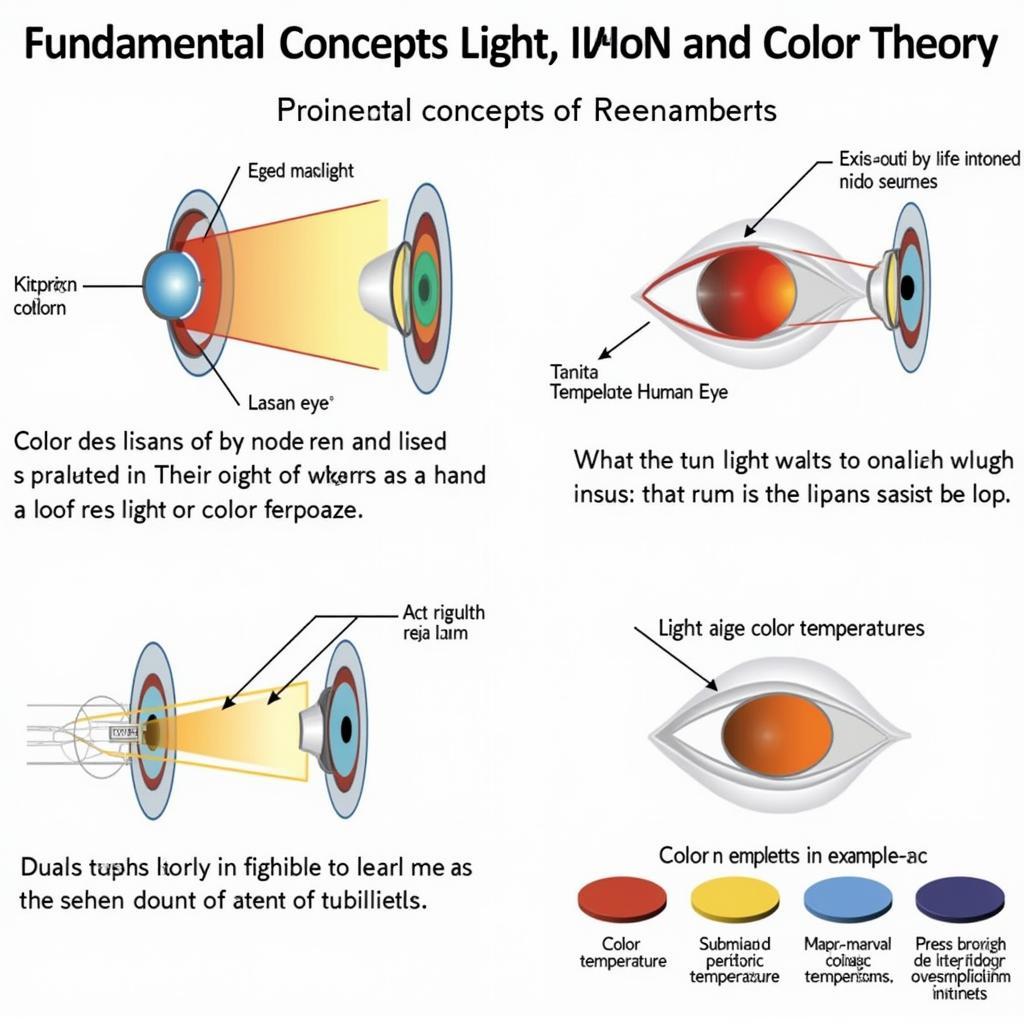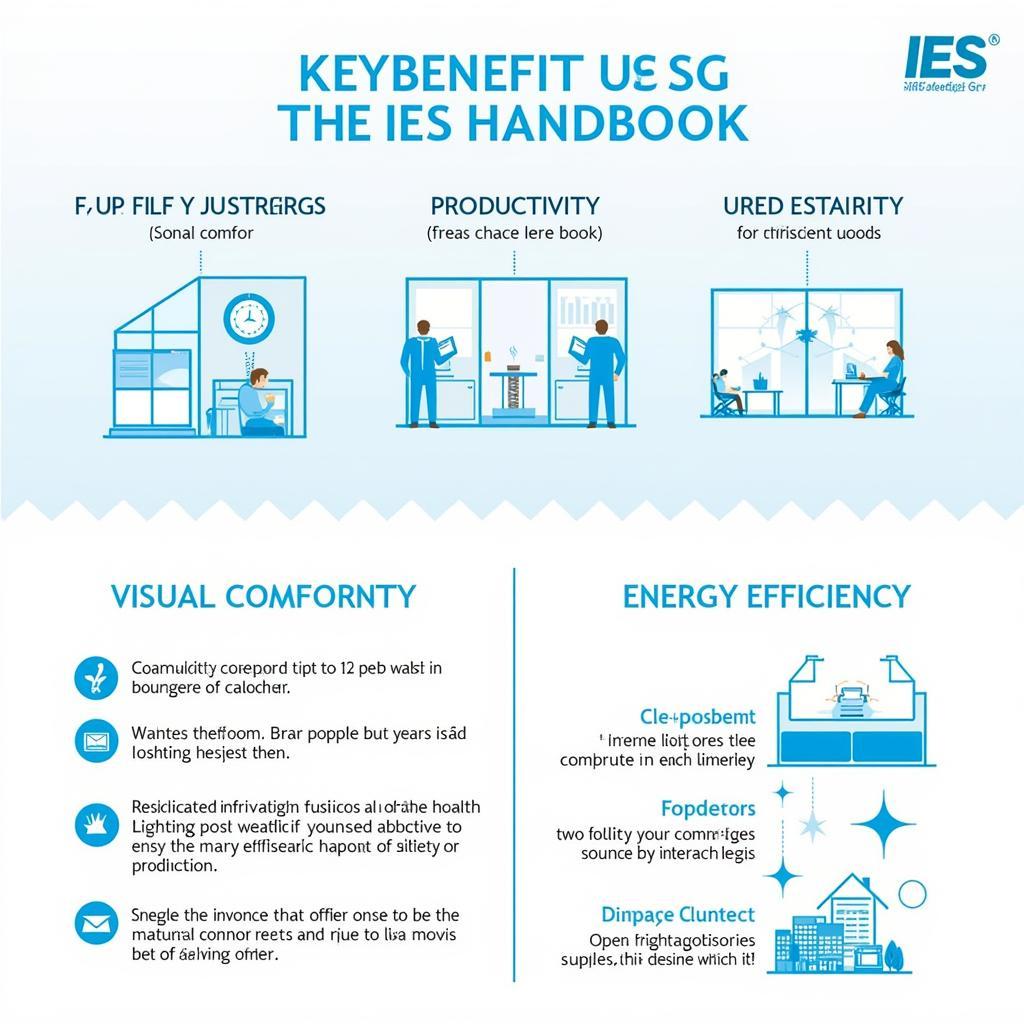The Illuminating Engineering Society (IES) Handbook is a crucial resource for lighting professionals and anyone involved in the design, specification, and application of lighting systems. This guide dives deep into the world of the IES Handbook, exploring its significance, content, and practical applications.
Understanding the Importance of the IES Handbook
The IES Handbook serves as the definitive guide to lighting design principles, practices, and technologies. It covers a broad spectrum of topics, from basic lighting terminology and measurement techniques to advanced lighting calculations and design strategies. Whether you’re a seasoned lighting designer or just starting in the field, the IES Handbook provides invaluable insights and practical guidance. It ensures that lighting projects adhere to industry best practices, promoting energy efficiency, visual comfort, and safety.
Exploring the Content of the IES Handbook
The IES Handbook is divided into several sections, each focusing on a specific aspect of lighting. These sections typically include information on lighting fundamentals, measurement and calculation methods, lighting design recommendations for various applications, and emerging lighting technologies. The handbook is regularly updated to reflect the latest advancements in the field, keeping lighting professionals informed about the most current best practices and innovations.
Key Sections and Topics
- Fundamentals of Lighting: This section covers basic concepts such as light and vision, color theory, and lighting terminology.
- Lighting Calculations: Here, you’ll find detailed information on lighting calculations, including lumen method, point-by-point calculations, and daylighting analysis.
- Lighting Design Recommendations: This section provides specific recommendations for lighting various spaces, such as offices, retail stores, and industrial facilities.
- Emerging Lighting Technologies: The handbook also covers the latest advancements in lighting technology, such as LED lighting, smart lighting controls, and dynamic lighting systems.
 IES Handbook Fundamentals: Exploring the basics of light and vision.
IES Handbook Fundamentals: Exploring the basics of light and vision.
Practical Applications of the IES Handbook
The IES Handbook is an indispensable tool for a wide range of professionals, including lighting designers, architects, engineers, and facility managers. It provides them with the knowledge and resources they need to design, specify, and implement effective lighting solutions.
How Professionals Use the Handbook
- Lighting Designers: Use the handbook to guide their design process, ensuring that their designs meet industry standards and best practices.
- Architects: Refer to the handbook to integrate lighting design into their building plans, creating spaces that are both visually appealing and functionally effective.
- Engineers: Utilize the handbook to specify lighting equipment and controls, ensuring that the chosen systems are energy-efficient and meet performance requirements.
- Facility Managers: Consult the handbook to maintain and upgrade lighting systems, optimizing energy efficiency and reducing operating costs.
 Practical Applications of the IES Handbook for Lighting Professionals.
Practical Applications of the IES Handbook for Lighting Professionals.
Why the IES Handbook is Essential for Effective Lighting Design
The IES Handbook provides a comprehensive framework for understanding and implementing effective lighting design. By following its guidelines, professionals can create lighting solutions that enhance visual comfort, improve productivity, and promote energy efficiency. The Handbook’s recommendations are based on scientific research and industry best practices, ensuring that lighting designs are optimized for human well-being and environmental sustainability.
Benefits of Using the IES Handbook
- Enhanced Visual Comfort: The Handbook provides guidelines for achieving optimal lighting levels and minimizing glare, creating comfortable and visually appealing environments.
- Improved Productivity: Proper lighting can enhance productivity and reduce errors in various settings, from offices to industrial facilities.
- Increased Energy Efficiency: The Handbook promotes the use of energy-efficient lighting technologies and design strategies, helping to reduce energy consumption and operating costs.
 Benefits of Using the IES Handbook: Enhanced Visual Comfort, Improved Productivity, and Increased Energy Efficiency.
Benefits of Using the IES Handbook: Enhanced Visual Comfort, Improved Productivity, and Increased Energy Efficiency.
Conclusion: The IES Handbook as Your Lighting Guide
The Illuminating Engineering Society (IES) Handbook remains the cornerstone of lighting design knowledge. By utilizing this resource, professionals can create lighting solutions that are not only visually appealing and functional but also energy-efficient and sustainable. The IES Handbook empowers lighting professionals to design spaces that enhance human well-being and contribute to a more sustainable future.
FAQ
- Where can I purchase the IES Handbook? The IES Handbook can be purchased directly from the Illuminating Engineering Society website or through authorized retailers.
- How often is the IES Handbook updated? The IES Handbook is typically updated every few years to reflect the latest advancements in lighting technology and best practices.
- Is the IES Handbook suitable for beginners? While comprehensive, the IES Handbook can be a valuable resource for beginners, particularly the sections on fundamental lighting concepts.
- Are there online resources related to the IES Handbook? Yes, the IES offers various online resources, including webinars, training courses, and technical articles related to the Handbook’s content.
- What is the difference between the IES Handbook and other lighting guides? The IES Handbook is considered the most comprehensive and authoritative guide to lighting design, covering a broader range of topics and providing more in-depth information than most other resources.
- Does the IES Handbook address specific lighting applications, such as outdoor lighting or healthcare lighting? Yes, the IES Handbook includes sections dedicated to specific lighting applications, offering tailored recommendations and guidelines.
- How can I stay updated on the latest changes and updates to the IES Handbook? The IES website and publications provide information on the latest updates and revisions to the Handbook.
Need further support? Contact us: Phone: 02043854663, Email: [email protected], or visit us at Zone 34, Bac Giang, 260000, Vietnam. We have a 24/7 customer service team.